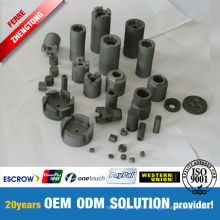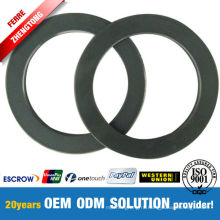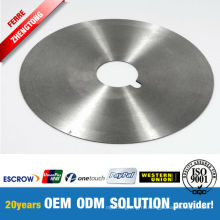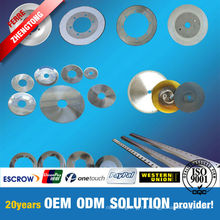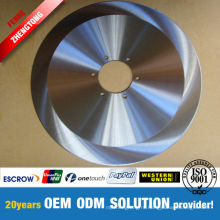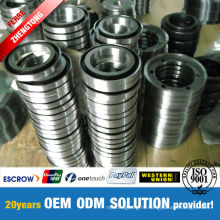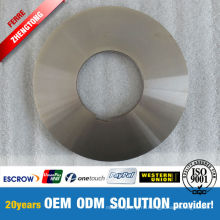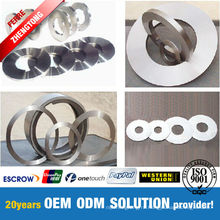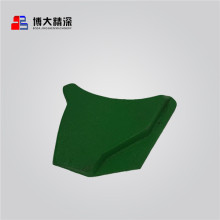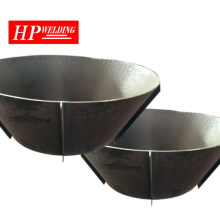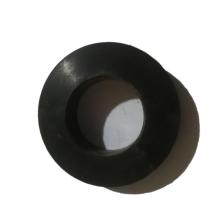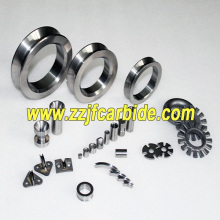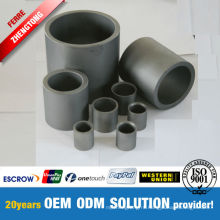K10 K20 M10 P10 Carbide Pin for Tire Stud
- марка:
- Ferre
- Место происхождения:
- Sichuan, China (Mainland)
Базовая информация
Модель: Different Carbide Pin for Tire Stud
Описание продукта
K10 K20 M10 P10 Carbide Pin for Tire Stud
Carbide Pin for Tire Stud Description:
Carbide Pin for Tire Stud are commonly inserted in snow tires in areas with a lot of snowy
or icy weather. Carbide studs consist of two primary parts. The tungsten carbide pin is
the element that protrudes beyond the tire tread and contacts the pavement surface.
The outside part of the stud is a cylindrical metal jacket or body that is held in the tire
tread rubber by a flange at the base.
Tungsten Carbide Pins are intended for tractor, large working vehicle, loader and forklift.
Carbide Pin for Tire Stud Grade Recommended:
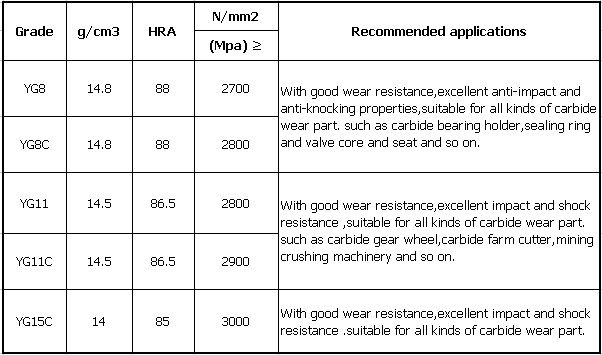
Carbide Pin for Tire Stud Display:

Carbide Pin for Tire Stud Application Field:

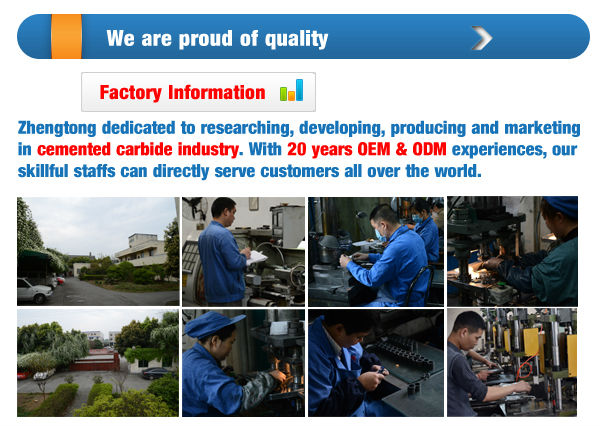
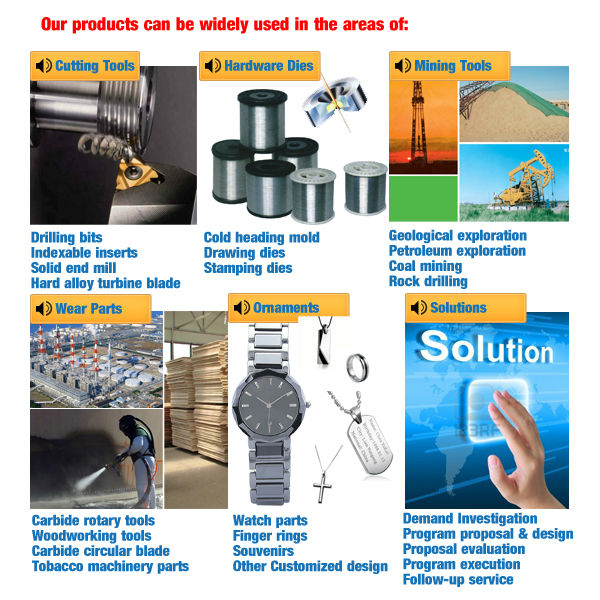
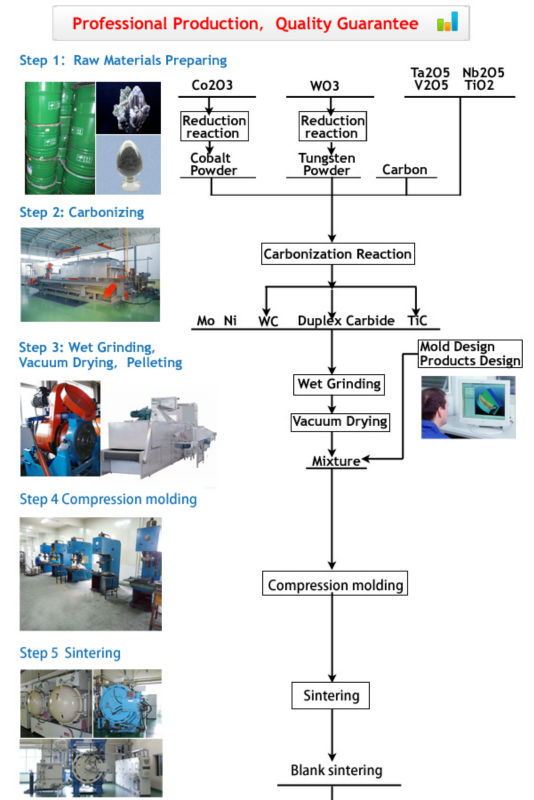
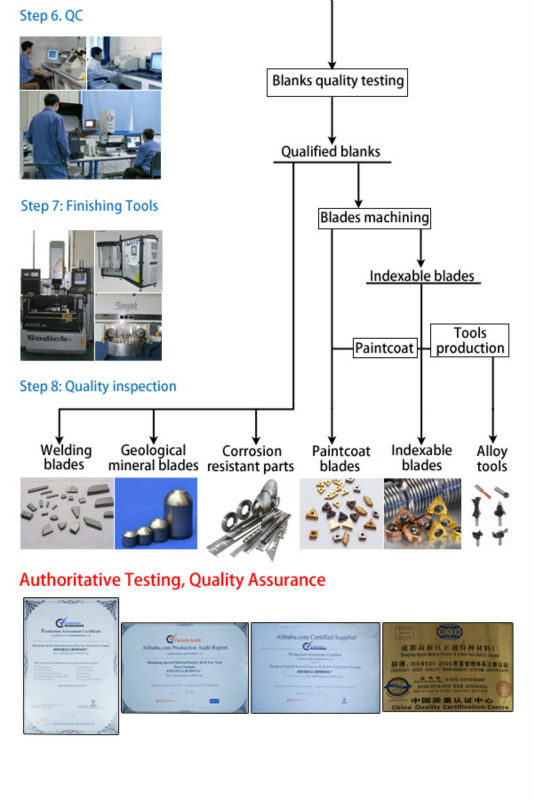
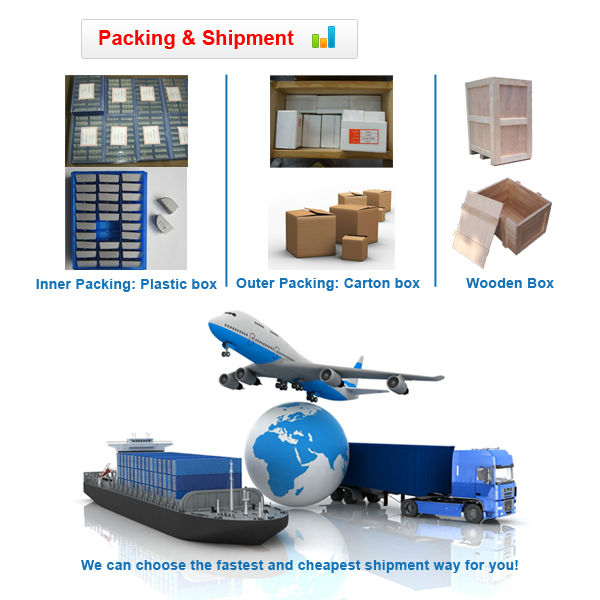
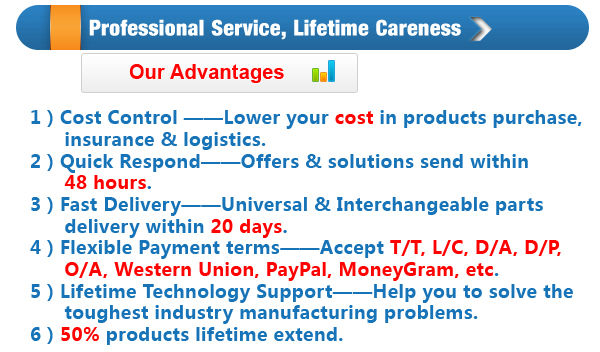



Q:What is cemented carbide ?
A:Cemented carbide is a hard material used in machining tough materials such as carbon steel or
stainless, as well as in situations where other tools would wear away, such as high-quantity
production runs. Most of the time, carbide will leave a better finish on the part, and allow faster
machining. Carbide tools can also withstand higher temperatures than standard high speed steel tools.
Q:What is the difference between cemented and tungsten carbide?
A:Cemented carbides consist of hard grains of the carbides of transition metals (Ti, V, Cr, Zr, Mo,
Nb, Hf, Ta, and/or W) cemented or bound together by a softer metallic binder consisting of Co,
Ni, and/or Fe (or alloys of these metals). Tungsten carbide (WC), on the other hand, is a compound
of W and C. Since most of the commercially important cemented carbides are based on WC as
the hard phase, the terms "cemented carbide" and "tungsten carbide" are often used interchangeably.
Q:What are the key properties of cemented carbides I should be concerned with when
selecting a grade for my application?
A: The key properties of cemented carbides that define their performance level for different
applications include abrasion resistance (directly related to the hardness of the grade),
fracture strength, and fracture toughness. In general, the abrasion resistance or hardness of any grade
is inversely proportional to its fracture toughness. Very often grade selection involves finding the best
compromise between abrasion resistance and toughness. In some instances strength and corrosion
resistance can be important factors in the grade selection process.
Q: Which grade characteristics affect the properties of cemented carbide?
A: The properties of cemented carbides are affected by four primary material characteristics,
namely,( 54491523,i) the average grain size of the carbide phase,( 54491524,ii) the weight or volume percent of the
binder alloy present,( 54491525,iii) the composition of the carbide phases, and (iv) the composition of the
binder alloy. In general, hardness increases (and fracture toughness decreases) as the average hard
phase grain size decreases and/or the weight or volume fraction of the binder decreases.
The strength increases as the average grain size of hard phase decreases at any given binder fraction.
Corrosion resistance increases as Ni and/or Cr is substituted for Co in the binder alloy.
Q: Which properties are important in metal cutting applications?
A: Depending upon the type of metalcutting operation (turning, milling, drilling, etc.), different
combinations of properties is needed in order to obtain optimum results. For example, in turning
and drilling applications the cutting tool is in continuous contact with the workpiece. Hence,
for these applications, abrasion resistance and strength are the most important properties to consider.
However, in operations such as milling, which invariably involve interrupted cutting, and hence high
impact forces, toughness can be an important factor. Grades employed for metalcutting applications
are usually based on fine to medium hard phase grain sizes (0.5 to 1.5 mm) and low to medium
Co contents (6 to 15 wt.%).
Q: Are grades used for cutting nonferrous metals different from those used for ferrous metals?
A: Yes. Grades used for cutting nonferrous metals are usually based on WC as the hard phase and
Co as the binder phase. On the other hand, grades used for cutting ferrous metals usually contain
other hard carbides (e.g., TiC, TaC, NbC, etc.) besides WC. The presence of the TiC, TaC, NbC, etc.
is useful in preventing chemical interactions between the ferrous metals and the cutting tool (which can
lead to cratering on the surface of the tool). In addition, carbides such as TiC, TaC, NbC, etc.
can help increase the hot hardness and strength of cemented carbides.
Q: Which grades are useful in metal forming applications?
A: In contrast to metalcutting (where abrasion resistance and strength are of paramount importance),
cemented carbides used in metalforming applications will invariably be subject to high impact and
shock forces. Hence, grades used for metalforming applications must possess high toughness levels
with adequate abrasion resistance and strength. Grades employed for metalforming applications are
typically based on coarse grain sizes (3 to 8 mm) and high binder contents (15 to 30 wt. %).
Q: Which grades are useful in earth drilling or boring applications?
A: In many respects the characteristics of the grades employed for earth drilling and boring
represent a compromise between the characteristics that are important for metalcutting and those that
are important for metalforming applications. Grades for earth drilling and boring must possess
the highest toughness levels for any given abrasion resistance level, while simultaneously possessing
adequate strength levels. The best compromise is usually arrived at by using grades that are based on
coarse grain sizes (3 to 8 mm) and relatively low Co levels (6 to 16 wt. %).
Q: How can I choose the most suitable products for my applications?
A: 1. Correct installation site depends on specific size and drawings. Especially for dies processing,
drawings can ensure the finished products are qualified.
2. Processing objects and working environment is determined by cemented carbide grades.
Products' lifetime can be greatly extend if grades are right.


Carbide pin for tire stud, Carbide pin for tire stud, Carbide pin for tire stud, Carbide pin for tire stud, Carbide pin for tire stud, Carbide pin for tire stud, Carbide pin for tire stud, Carbide pin for tire stud, Carbide pin for tire stud, Carbide pin for tire stud, Carbide pin for tire stud, Carbide pin for tire stud, Carbide pin for tire stud, Carbide pin for tire stud, Carbide pin for tire stud, Carbide pin for tire stud, Carbide pin for tire stud, Carbide pin for tire stud, Carbide pin for tire stud, Carbide pin for tire stud, Carbide pin for tire stud, Carbide pin for tire stud, Carbide pin for tire stud, Carbide pin for tire stud, Carbide pin for tire stud, Carbide pin for tire stud, Carbide pin for tire stud, Carbide pin for tire stud, Carbide pin for tire stud, Carbide pin for tire stud, Carbide pin for tire stud, Carbide pin for tire stud, Carbide pin for tire stud, Carbide pin for tire stud, Carbide pin for tire stud, Carbide pin for tire stud, Carbide pin for tire stud, Carbide pin for tire stud, Carbide pin for tire stud, Carbide pin for tire stud, Carbide pin for tire stud, Carbide pin for tire stud, Carbide pin for tire stud, Carbide pin for tire stud, Carbide pin for tire stud, Carbide pin for tire stud, Carbide pin for tire stud, Carbide pin for tire stud, Carbide pin for tire stud, Carbide pin for tire stud, Carbide pin for tire stud, Carbide pin for tire stud, Carbide pin for tire stud, Carbide pin for tire stud, Carbide pin for tire stud, Carbide pin for tire stud, Carbide pin for tire stud, Carbide pin for tire stud, Carbide pin for tire stud, Carbide pin for tire stud, Carbide pin for tire stud, Carbide pin for tire stud, Carbide pin for tire stud, Carbide pin for tire stud, Carbide pin for tire stud, Carbide pin for tire stud, Carbide pin for tire stud, Carbide pin for tire stud, Carbide pin for tire stud, Carbide pin for tire stud, Carbide pin for tire stud, Carbide pin for tire stud, Carbide pin for tire stud, Carbide pin for tire stud, Carbide pin for tire stud, Carbide pin for tire stud, Carbide pin for tire stud, Carbide pin for tire stud, Carbide pin for tire stud, Carbide pin for tire stud, Carbide pin for tire stud, Carbide pin for tire stud, Carbide pin for tire stud, Carbide pin for tire stud, Carbide pin for tire stud, Carbide pin for tire stud, Carbide pin for tire stud, Carbide pin for tire stud, Carbide pin for tire stud, Carbide pin for tire stud, Carbide pin for tire stud, Carbide pin for tire stud, Carbide pin for tire stud, Carbide pin for tire stud, Carbide pin for tire stud, Carbide pin for tire stud, Carbide pin for tire stud, Carbide pin for tire stud, Carbide pin for tire stud, Carbide pin for tire stud, Carbide pin for tire stud, Carbide pin for tire stud, Carbide pin for tire stud, Carbide pin for tire stud, Carbide pin for tire stud, Carbide pin for tire stud, Carbide pin for tire stud, Carbide pin for tire stud, Carbide pin for tire stud, Carbide pin for tire stud, Carbide pin for tire stud, Carbide pin for tire stud, Carbide pin for tire stud, Carbide pin for tire stud, Carbide pin for tire stud, Carbide pin for tire stud, Carbide pin for tire stud, Carbide pin for tire stud, Carbide pin for tire stud, Carbide pin for tire stud, Carbide pin for tire stud, Carbide pin for tire stud, Carbide pin for tire stud, Carbide pin for tire stud, Carbide pin for tire stud, Carbide pin for tire stud, Carbide pin for tire stud, Carbide pin for tire stud, Carbide pin for tire stud, Carbide pin for tire stud, Carbide pin for tire stud
Carbide Pin for Tire Stud Description:
Carbide Pin for Tire Stud are commonly inserted in snow tires in areas with a lot of snowy
or icy weather. Carbide studs consist of two primary parts. The tungsten carbide pin is
the element that protrudes beyond the tire tread and contacts the pavement surface.
The outside part of the stud is a cylindrical metal jacket or body that is held in the tire
tread rubber by a flange at the base.
Tungsten Carbide Pins are intended for tractor, large working vehicle, loader and forklift.
Carbide Pin for Tire Stud Grade Recommended:

Carbide Pin for Tire Stud Display:

Carbide Pin for Tire Stud Application Field:










Q:What is cemented carbide ?
A:Cemented carbide is a hard material used in machining tough materials such as carbon steel or
stainless, as well as in situations where other tools would wear away, such as high-quantity
production runs. Most of the time, carbide will leave a better finish on the part, and allow faster
machining. Carbide tools can also withstand higher temperatures than standard high speed steel tools.
Q:What is the difference between cemented and tungsten carbide?
A:Cemented carbides consist of hard grains of the carbides of transition metals (Ti, V, Cr, Zr, Mo,
Nb, Hf, Ta, and/or W) cemented or bound together by a softer metallic binder consisting of Co,
Ni, and/or Fe (or alloys of these metals). Tungsten carbide (WC), on the other hand, is a compound
of W and C. Since most of the commercially important cemented carbides are based on WC as
the hard phase, the terms "cemented carbide" and "tungsten carbide" are often used interchangeably.
Q:What are the key properties of cemented carbides I should be concerned with when
selecting a grade for my application?
A: The key properties of cemented carbides that define their performance level for different
applications include abrasion resistance (directly related to the hardness of the grade),
fracture strength, and fracture toughness. In general, the abrasion resistance or hardness of any grade
is inversely proportional to its fracture toughness. Very often grade selection involves finding the best
compromise between abrasion resistance and toughness. In some instances strength and corrosion
resistance can be important factors in the grade selection process.
Q: Which grade characteristics affect the properties of cemented carbide?
A: The properties of cemented carbides are affected by four primary material characteristics,
namely,( 54491523,i) the average grain size of the carbide phase,( 54491524,ii) the weight or volume percent of the
binder alloy present,( 54491525,iii) the composition of the carbide phases, and (iv) the composition of the
binder alloy. In general, hardness increases (and fracture toughness decreases) as the average hard
phase grain size decreases and/or the weight or volume fraction of the binder decreases.
The strength increases as the average grain size of hard phase decreases at any given binder fraction.
Corrosion resistance increases as Ni and/or Cr is substituted for Co in the binder alloy.
Q: Which properties are important in metal cutting applications?
A: Depending upon the type of metalcutting operation (turning, milling, drilling, etc.), different
combinations of properties is needed in order to obtain optimum results. For example, in turning
and drilling applications the cutting tool is in continuous contact with the workpiece. Hence,
for these applications, abrasion resistance and strength are the most important properties to consider.
However, in operations such as milling, which invariably involve interrupted cutting, and hence high
impact forces, toughness can be an important factor. Grades employed for metalcutting applications
are usually based on fine to medium hard phase grain sizes (0.5 to 1.5 mm) and low to medium
Co contents (6 to 15 wt.%).
Q: Are grades used for cutting nonferrous metals different from those used for ferrous metals?
A: Yes. Grades used for cutting nonferrous metals are usually based on WC as the hard phase and
Co as the binder phase. On the other hand, grades used for cutting ferrous metals usually contain
other hard carbides (e.g., TiC, TaC, NbC, etc.) besides WC. The presence of the TiC, TaC, NbC, etc.
is useful in preventing chemical interactions between the ferrous metals and the cutting tool (which can
lead to cratering on the surface of the tool). In addition, carbides such as TiC, TaC, NbC, etc.
can help increase the hot hardness and strength of cemented carbides.
Q: Which grades are useful in metal forming applications?
A: In contrast to metalcutting (where abrasion resistance and strength are of paramount importance),
cemented carbides used in metalforming applications will invariably be subject to high impact and
shock forces. Hence, grades used for metalforming applications must possess high toughness levels
with adequate abrasion resistance and strength. Grades employed for metalforming applications are
typically based on coarse grain sizes (3 to 8 mm) and high binder contents (15 to 30 wt. %).
Q: Which grades are useful in earth drilling or boring applications?
A: In many respects the characteristics of the grades employed for earth drilling and boring
represent a compromise between the characteristics that are important for metalcutting and those that
are important for metalforming applications. Grades for earth drilling and boring must possess
the highest toughness levels for any given abrasion resistance level, while simultaneously possessing
adequate strength levels. The best compromise is usually arrived at by using grades that are based on
coarse grain sizes (3 to 8 mm) and relatively low Co levels (6 to 16 wt. %).
Q: How can I choose the most suitable products for my applications?
A: 1. Correct installation site depends on specific size and drawings. Especially for dies processing,
drawings can ensure the finished products are qualified.
2. Processing objects and working environment is determined by cemented carbide grades.
Products' lifetime can be greatly extend if grades are right.


Carbide pin for tire stud, Carbide pin for tire stud, Carbide pin for tire stud, Carbide pin for tire stud, Carbide pin for tire stud, Carbide pin for tire stud, Carbide pin for tire stud, Carbide pin for tire stud, Carbide pin for tire stud, Carbide pin for tire stud, Carbide pin for tire stud, Carbide pin for tire stud, Carbide pin for tire stud, Carbide pin for tire stud, Carbide pin for tire stud, Carbide pin for tire stud, Carbide pin for tire stud, Carbide pin for tire stud, Carbide pin for tire stud, Carbide pin for tire stud, Carbide pin for tire stud, Carbide pin for tire stud, Carbide pin for tire stud, Carbide pin for tire stud, Carbide pin for tire stud, Carbide pin for tire stud, Carbide pin for tire stud, Carbide pin for tire stud, Carbide pin for tire stud, Carbide pin for tire stud, Carbide pin for tire stud, Carbide pin for tire stud, Carbide pin for tire stud, Carbide pin for tire stud, Carbide pin for tire stud, Carbide pin for tire stud, Carbide pin for tire stud, Carbide pin for tire stud, Carbide pin for tire stud, Carbide pin for tire stud, Carbide pin for tire stud, Carbide pin for tire stud, Carbide pin for tire stud, Carbide pin for tire stud, Carbide pin for tire stud, Carbide pin for tire stud, Carbide pin for tire stud, Carbide pin for tire stud, Carbide pin for tire stud, Carbide pin for tire stud, Carbide pin for tire stud, Carbide pin for tire stud, Carbide pin for tire stud, Carbide pin for tire stud, Carbide pin for tire stud, Carbide pin for tire stud, Carbide pin for tire stud, Carbide pin for tire stud, Carbide pin for tire stud, Carbide pin for tire stud, Carbide pin for tire stud, Carbide pin for tire stud, Carbide pin for tire stud, Carbide pin for tire stud, Carbide pin for tire stud, Carbide pin for tire stud, Carbide pin for tire stud, Carbide pin for tire stud, Carbide pin for tire stud, Carbide pin for tire stud, Carbide pin for tire stud, Carbide pin for tire stud, Carbide pin for tire stud, Carbide pin for tire stud, Carbide pin for tire stud, Carbide pin for tire stud, Carbide pin for tire stud, Carbide pin for tire stud, Carbide pin for tire stud, Carbide pin for tire stud, Carbide pin for tire stud, Carbide pin for tire stud, Carbide pin for tire stud, Carbide pin for tire stud, Carbide pin for tire stud, Carbide pin for tire stud, Carbide pin for tire stud, Carbide pin for tire stud, Carbide pin for tire stud, Carbide pin for tire stud, Carbide pin for tire stud, Carbide pin for tire stud, Carbide pin for tire stud, Carbide pin for tire stud, Carbide pin for tire stud, Carbide pin for tire stud, Carbide pin for tire stud, Carbide pin for tire stud, Carbide pin for tire stud, Carbide pin for tire stud, Carbide pin for tire stud, Carbide pin for tire stud, Carbide pin for tire stud, Carbide pin for tire stud, Carbide pin for tire stud, Carbide pin for tire stud, Carbide pin for tire stud, Carbide pin for tire stud, Carbide pin for tire stud, Carbide pin for tire stud, Carbide pin for tire stud, Carbide pin for tire stud, Carbide pin for tire stud, Carbide pin for tire stud, Carbide pin for tire stud, Carbide pin for tire stud, Carbide pin for tire stud, Carbide pin for tire stud, Carbide pin for tire stud, Carbide pin for tire stud, Carbide pin for tire stud, Carbide pin for tire stud, Carbide pin for tire stud, Carbide pin for tire stud, Carbide pin for tire stud, Carbide pin for tire stud, Carbide pin for tire stud, Carbide pin for tire stud, Carbide pin for tire stud, Carbide pin for tire stud, Carbide pin for tire stud
Группа Продуктов : Инструменты Карбида Вольфрама > Износ Деталей
Premium Related Products
Другие продукты
Горячие продукты
Экономической Спрей Туман СоплаВольфрамовой Твердосплавной Промышленности Сопло БрызгаНикелевый Сплав Металлов,Вольфрама Рыболовные СнастиВысокое Коррозионностойкое Поставщик Втулка Карбид вольфрама доска/плита подается в Прессформу ПроизводствоВысокая Доля Вольфрамового Сплава БарЧистке Большие Ярости Потока Сопла Промышленного СоплаГидравлический Насос O Кольцо ПечатьП1 П2 Сплавы Тяжелых Металлов На Вольфрамовой ФольгиУпаковка деталей машин ножи/ножи Корк 3MF451YL10.2 Карбид Вольфрама Стержень/Вольфрам Пруток ПрессованныйДешевые Вольфрама Оптовика Бисера Карбида вольфрама Реверзибельные Ножи для деревообработки Сделано в Китаенаклоняя нож ножницы нож 2599FA4-1 для машин Протос Hauni Литий-ионный аккумулятор полюсный наконечник разрезая лезвиеGood Quality Galvanized Steel Slitting Blade
